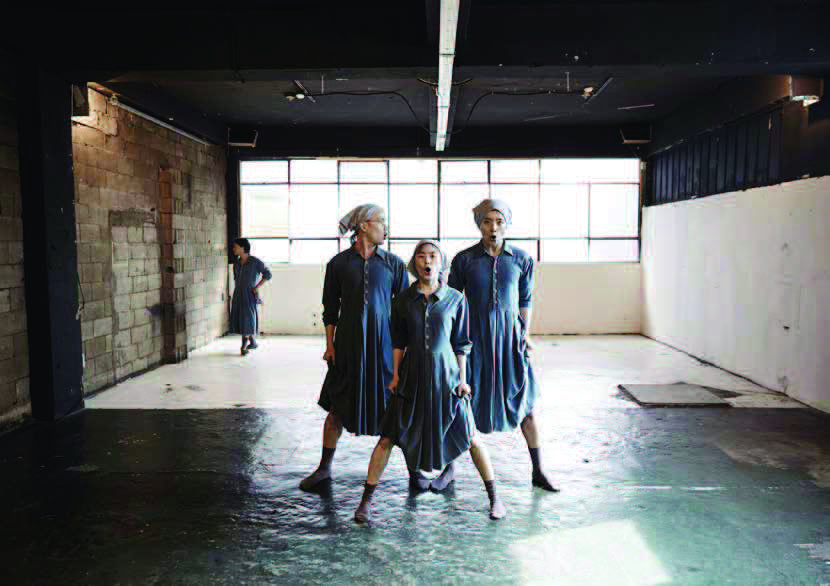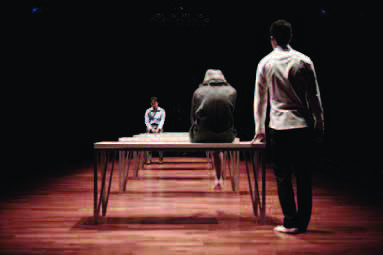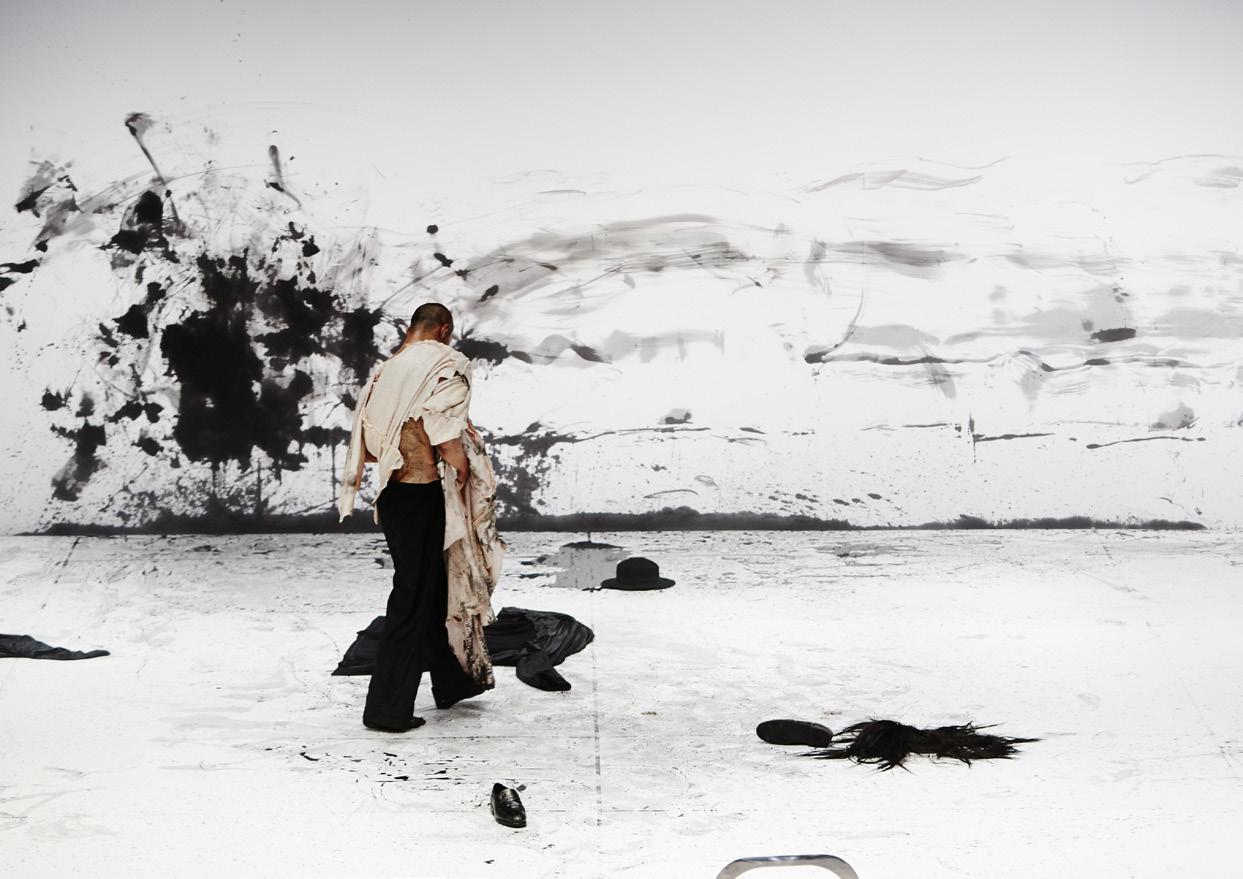Performance Info
Yangson Project
: Honest performance revealing the errors of the heart
Please tell us about your troupe Yangson Project and your work.
Yangson Project is a collaborative production team consisting of three performers and a director. Different from the setting in which the director chooses a work and then the staff and performers are organized and cast, in our company, the director together with the performers select the work and decide how to develop it. In the early stage of work, we discuss about the possibilities of the text as co-dramaturgs without distinction of roles as a performer or director and attempt to create scenes extempore for a long time, while making a proposal on directing in an equal position. Based on that, we move on to the next step of dividing the roles of the director and performers.
What is an attractive part of the collaborative production by Yangson Project?
It is about seeing an output that we haven’t imagined in a totally unpredictable situation. Our work gives us great immersion because each of us finds the work of our own. In discussion of the work, we tend to be more active. I would describe it as self-initiated. In this way, we come to understand each other’s thoughts of life and theatre and see how these thoughts have changed. While sharing our thoughts together, these thoughts become broader and deeper. In a way, we are all directors, writers as well as performers at the same time.
The sets and props are rarely used in your work. Do you have any reasons for pursuing something minimalistic?
We didn’t need a well-equipped stage because we were able to create a story or a felling with performers only. When the performer stands on an empty stage, his or her presence feels bigger and catches more attention. I don’t say that the sets are interruptive, but performers on the empty stage are already enough to fill the stage. And I think nothing leaves more imagination.
Your work is largely divided into two categories: a reconstruction of the original play and an adaptation of a novel into a play. What is the difference between the two?
The work with a play and that with a novel have a different starting point. In the case of a novel, there are well-constructed stories with a detailed description. The stories are to be freely editable. In the case of a play, performers are required to perform certain characters, whereas there exists a narrator and performers have to think of and perform something abstract apart from the characters and roles. Therefore, performers are put in a different situation in these two cases. And this difference is an interesting point.
Please explain about the Short Stories series, the works adapted from the novels.
I have created a series of short story collections by several novelists of diverse nationalities, including Korea, Japan and France, in different forms of plays. Each collection of short stories written by a novelist is adapted into a play in its most appropriate form: Short stories by Dazai Osamu: The dog is the beast (2011), Short stories by HYEON Jin-geon: A Crimson face (2013), Short stories by KIM Dong-In: Error of mind (2014), Short stories by Guy de Maupassant: Contes of days and nights (2015), and A piece of Human (2015).
For these projects on a collection of short stories, the four of us spent a long time in finding, selecting the books at the library and reading them again. And then the book all of us agreed on was finally selected. Criteria of agreement is to see if there were moments that things taking place within ourselves conflicted with each other intensely.
The dog is the beast, created based on the four short stories by the Japanese author Osamu Dazai, was invited and performed at the ’Beijing Fringe Festival 2012’ and ’Guangdong International Performing Arts Festival 2012’ as well as Dottori New Theatre Festival 2013’ in Japan. Contes of days and nights based on Guy de Maupassant’s three short stories was staged at the Avignon Festival 2016 at the Théâtre des Halles in France.
Death and the Maiden, an adaptation of the original play by the Argentine playwright Ariel Dorfman is Yangson Project’s signature piece. You only showed some essential scenes instead of showing the entire scenes.
We presented its premiere in 2012 at Doosan Art Lab. We first thought of drawing ’three scenes’ from the original and it became the basis of our work finally. We found out what its main points were and went through a process of eliminating unnecessary parts by practicing a couple of scenes by ourselves. Death and the Maiden is a story set in Chile but can be related to our society. We are much interested in the inner conflicts and their essence happening inside us. That’s where our focus was and we wanted to show it.
I found a work with the most physical and non-verbal expressions, based on a relatively long novel, among your works. How has the work Factory Girls been created?
It is based on the Korean writer YU Jin Oh’s modern novel that depicts a story of a girl in the Japanese colonial era, dealing with very special circumstances. Despite the individual conflict in her own specific situation, we thought it could be extended to a universal story that everyone can relate to. It was performed at the gallery converted from a factory. From the beginning, we looked for a space other than a theatre. It was presented at the place with a real factory chimney and a workshop that was really operating on the first floor.
Factory Girls was on tour in 6 theatres (Farnham Maltings, The Quarry theatre, The Key theatre, New theatre Royal, Warwick Arts Centre, Jacksons lane) in England from the end of September, 2017.
Yangson attempts to express the situations of intense conflict or difficult dilemmas that dramatic characters have honestly. What does Yangson intend to see through the ’drama’?
All our members pay attention to cowardice or shame as human beings to some extent. It reflects the aspects we also want to hide probably. The analysis of humans varies depending on the characteristics of the performers, but we focus on the miserable and tragic aspects of humans in the end.
What does ’drama’ mean to Yangson Project?
We love dramas. We have seen humans through the drama and valued the traits that something dramatic has. Probably drama was already included in theatre, rather than we chose drama ourselves. We ask questions to ourselves: What does it mean to be fond of dramas? What do we like about it? A dramatic story, characters, or intense feelings? In a sense, we doubt the drama itself or we’d like to learn more about its essential meanings.
Nowadays, we tend to rely on advanced technology of making high-quality dramas and that makes us feel frustrated. Recently, we think of broadening the scope of our work. We are seeking various possibilities of using the body within a wide area of performance.
What drives you to do theatre?
The most important thing to me is seeing and working with our great team members - humans as well as artists. It is wonderful to work with the people with whom I can share my feelings and talks under the same goal. Theatre is merely a means. It is to do something together that counts. That’s why we need courage.
Production Details
- Director
Reference
- E-maildjaak1313@hanmail.net













 PREV
PREV
.jpeg)
.jpg)
_(c)포스(FORCE).jpg)
_(c)장석현_코끼리들이 웃는다(SUKHYUN JANG_ELEPHANTS LAUGH).jpg)
.jpg)
.jpg)
_(c)한받(Hahn Vad).jpg)
_(c)비주얼씨어터 꽃(CCOT)(1).jpg)
_(c)봉앤줄 (BONGnJOULE)(1).jpg)
_(c)대한민국연극제 2019 (Korea Theater Festival 2019)(0).jpg)
_(c)몸꼴(Momggol)(1).jpg)
.png)
2018MODAFE_Taemin Cho (2).jpg)











